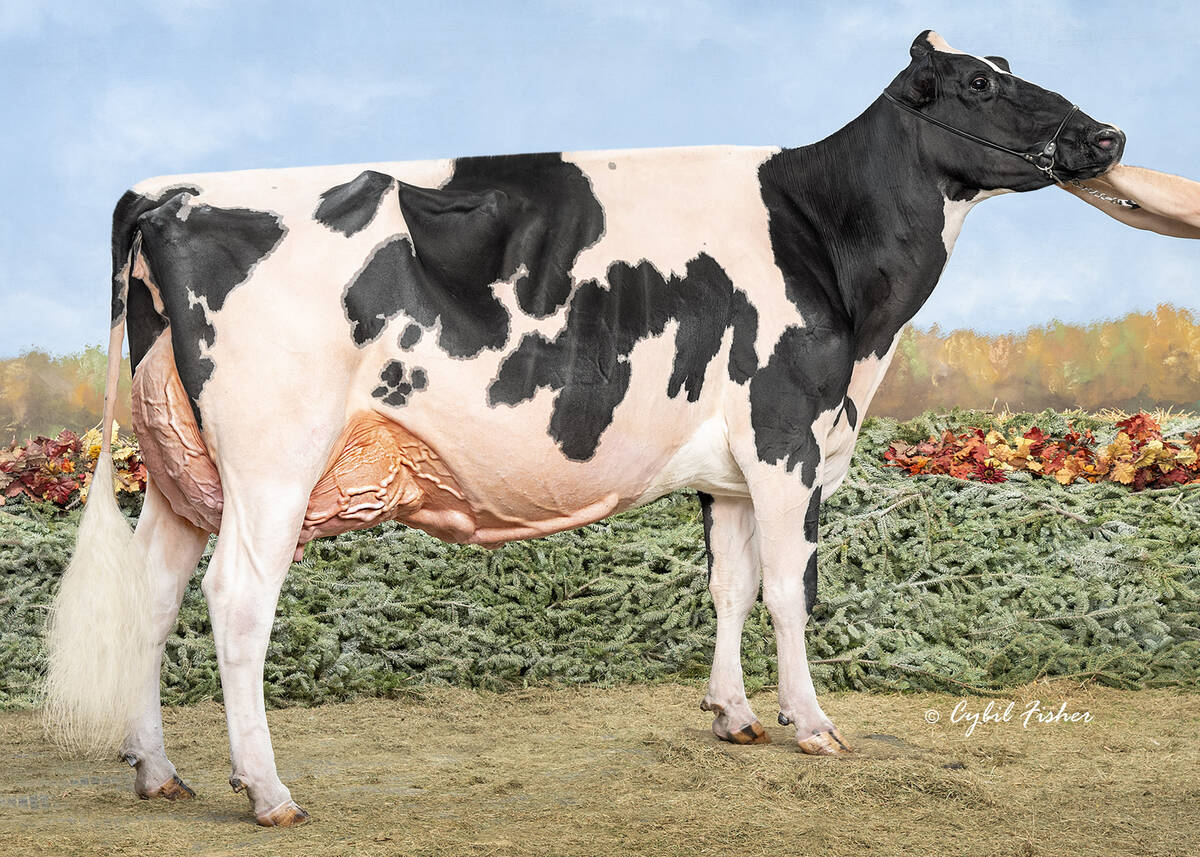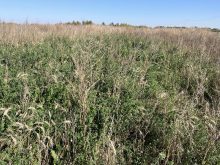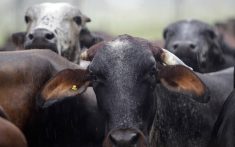RED DEER, Alta. – A bulge in the hog supply curve could see pork prices skid downward within weeks, says Larry Martin, of the George Morris Centre.
“Hog producers ought to be doing something to protect themselves,” said Martin at a recent agricultural outlook conference. “If you’re a hog producer you need to get worried.”
Martin said producers should sell some hog futures for protection against the price decline, which might show up after Christmas.
“We’re looking at lower prices next year than we’ve had in the last year. The big question is what will be the impact of the Japanese or the Asian market? Will they come in and start buying substantially and take us out of this thing?”
Read Also

Saskatchewan dairy farm breeds international champion
A Saskatchewan bred cow made history at the 2025 World Dairy Expo in Madison, Wisconsin, when she was named grand champion in the five-year-old Holstein class.
Part of the problem is triggered by widespread production and slaughter expansion in the United States.
He said the U.S. hog cycle shows a repetitive pattern of supply paired with price. If supply changes by one percent, the cost of commercial pork goes two percent in the opposite direction.
Since the U.S. is a major competitor for Canada, there are concerns the American expansion could drive out the profits, he said.
Between September and November, U.S. slaughter increased eight percent, which subsequently increased pork supplies.
The U.S. department of agriculture said there has been a seven percent increase in the number of pigs born this year. In addition, more pigs are born per sow and birth weight is increasing. Predictions are for seven percent more farrowings this year, further increasing pork supply in 1998.
If the Canadian dollar improves, livestock producers will feel additional hurt, said Martin. Anybody who has hogs or cattle in inventory is at risk if the exchange rate goes up, because it will cause product prices to drop, he said.
Canada is also at a disadvantage because of its slaughter capacity. The American packing industry is more efficient with double-shift plants and lower labor costs. American producers are also growing larger hogs that weigh about eight kilograms more than Canadians hogs.
Labor changes
The largest plant in Canada has a 32,000-pig-per-week capacity and only two plants run double shifts. The U.S. has 34 plants that are larger than Canada’s biggest one. In some cases they are three times larger.
“We have to have some changes in the labor situation and some changes in the plants,” Martin said.
“Why doesn’t somebody in Canada get a real plant?”
There are opportunities on the world market and that could offer some protection. Pork remains the most popular meat in the world with 40 percent of the meat pie, and consumption continues to grow.
Ray Price, of Pig Improvement Canada, told the outlook conference that Canada is a small player in world pork trade. It produces 2.5 percent of the world supply, far behind the Netherlands with 40 percent and Denmark at 36 percent of the world market.
However, there are increasing limitations in competitor countries. Taiwan and Holland have been eliminated from the world trade scene temporarily because of environmental and disease problems.
Canada is also looking at niches. Producers realize each market wants something different, said Price.















